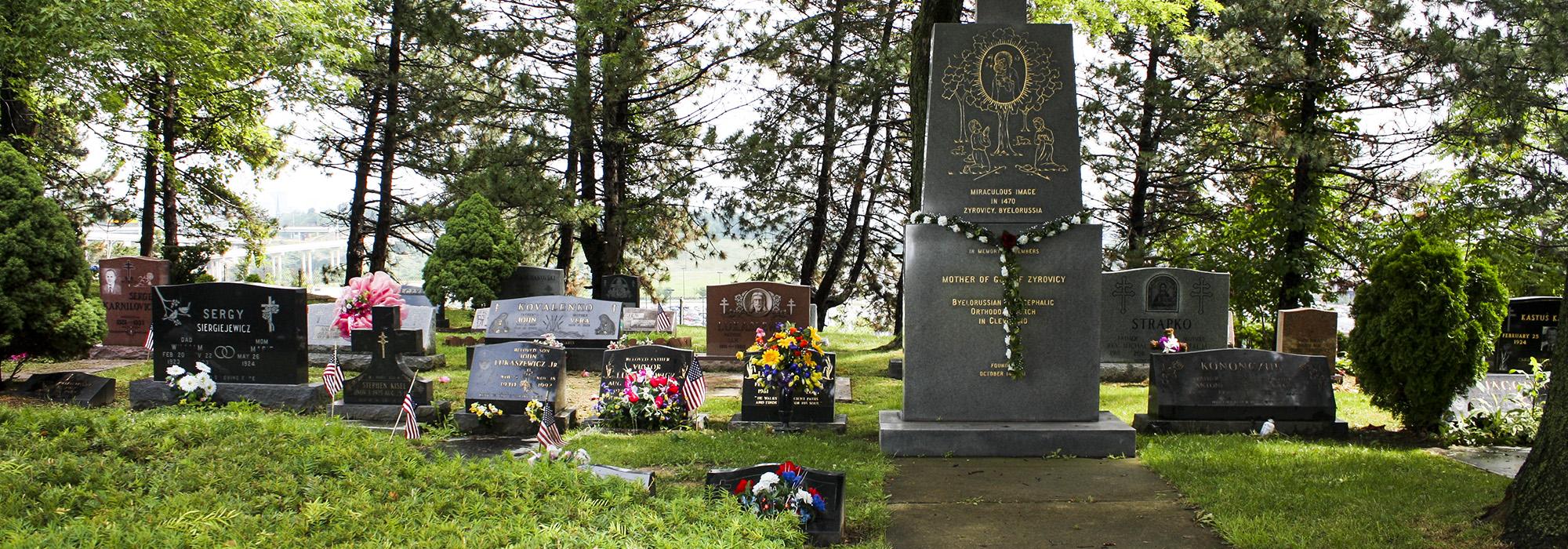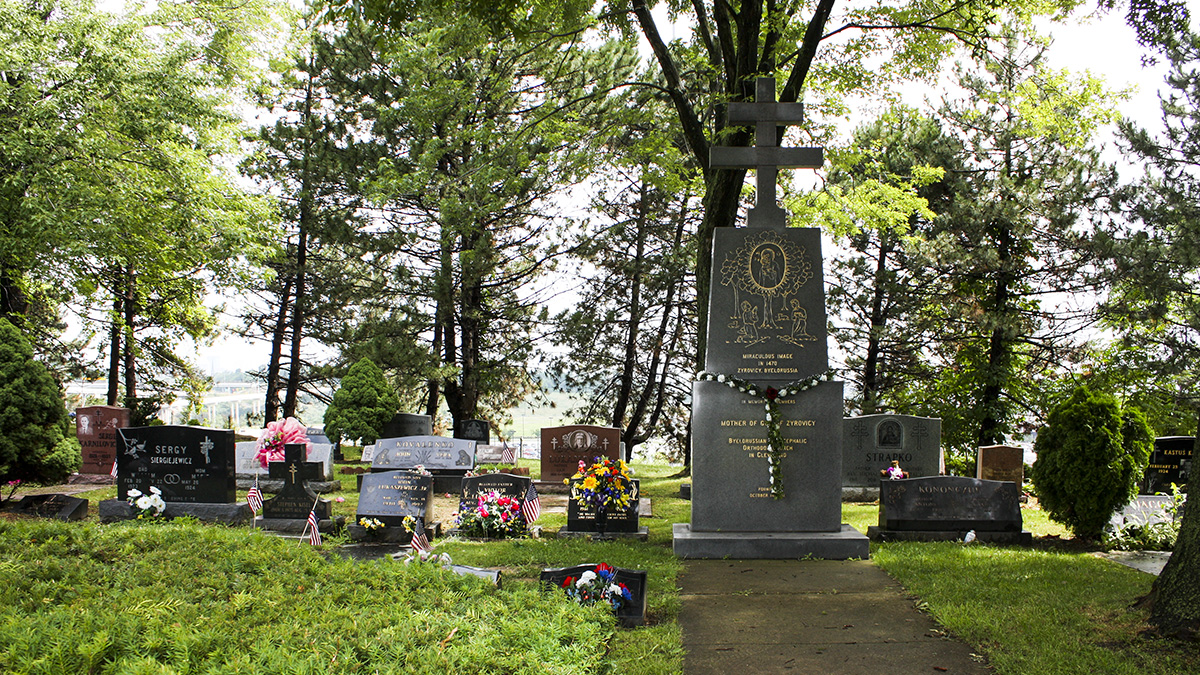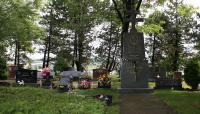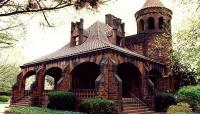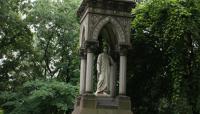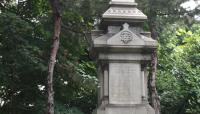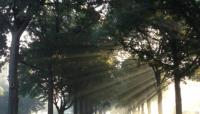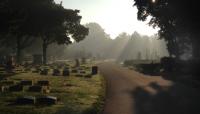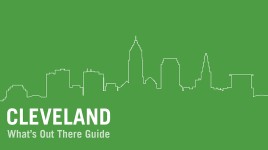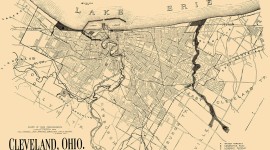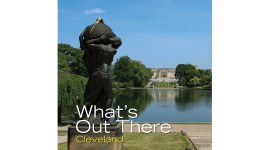Landscape Information
Founded in 1875 on 102.5 acres of rural farmland and named for its position on a plateau overlooking the Cuyahoga River, this was the first large, nonsectarian cemetery on Cleveland’s west side. The Riverside Cemetery Association selected the land for its picturesque natural qualities and enlisted landscape gardener E. O. Schwagerl and surveyor John M. Ackley to design the burial ground. In contrast with contemporaneous cemeteries, Riverside initially allowed only above-ground monuments but later permitted raised headstones and personal ornamentation of graves. Schwaegerl maintained 30 acres of open lawn and six-acres of picturesque lakes, planted groves of deciduous trees and flowering shrubs, and laid out a five-mile network of meandering roads. Architects Bruch & Monks designed a sandstone Victorian chapel on the west end of the grounds. At the formal dedication in November 1876, civic leaders planted a commemorative allée of American elms along Centennial Avenue, a 1000-foot long straight road stretching east from the chapel. In 1896 a Romanesque gatehouse designed by architect Charles Hopkinson was added.
Today, due to the construction of surrounding highways and the encroachment of dense residential and industrial areas Riverside is comprised of 90 acres of wooded groves and open lawns. Over the years, the lakes have been filled-in to accommodate the growth of the cemetery and the elm allée has been replaced by oaks. In 1987 the Gatehouse and Cemetery Chapel were added to the National Register of Historic Places.



